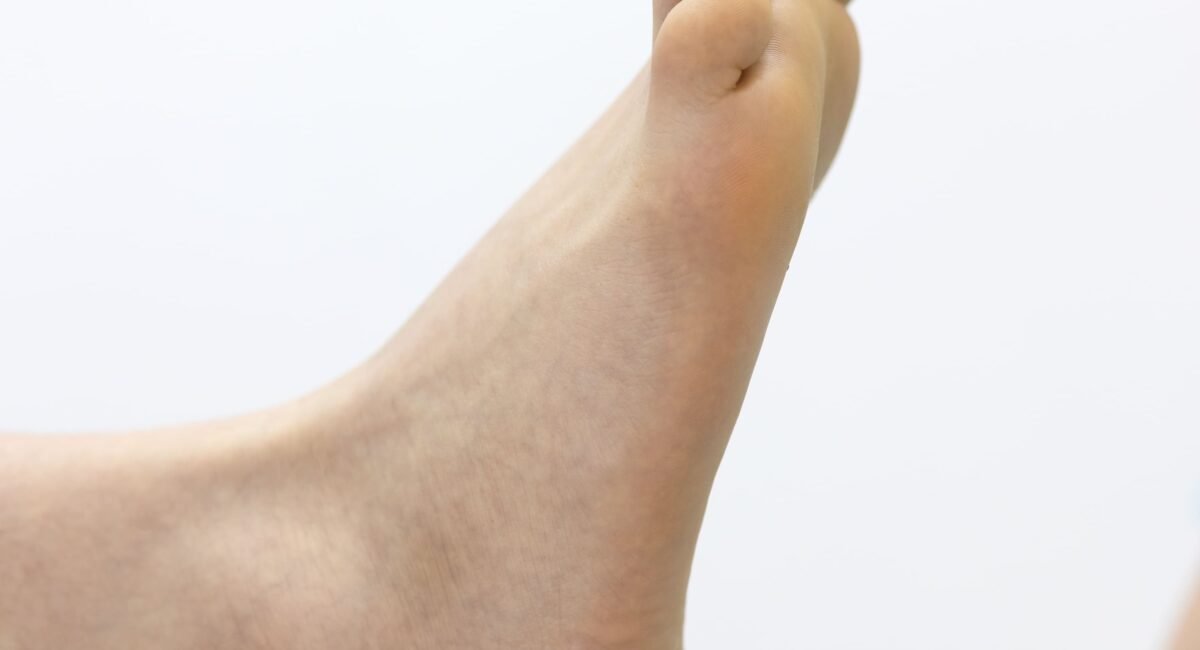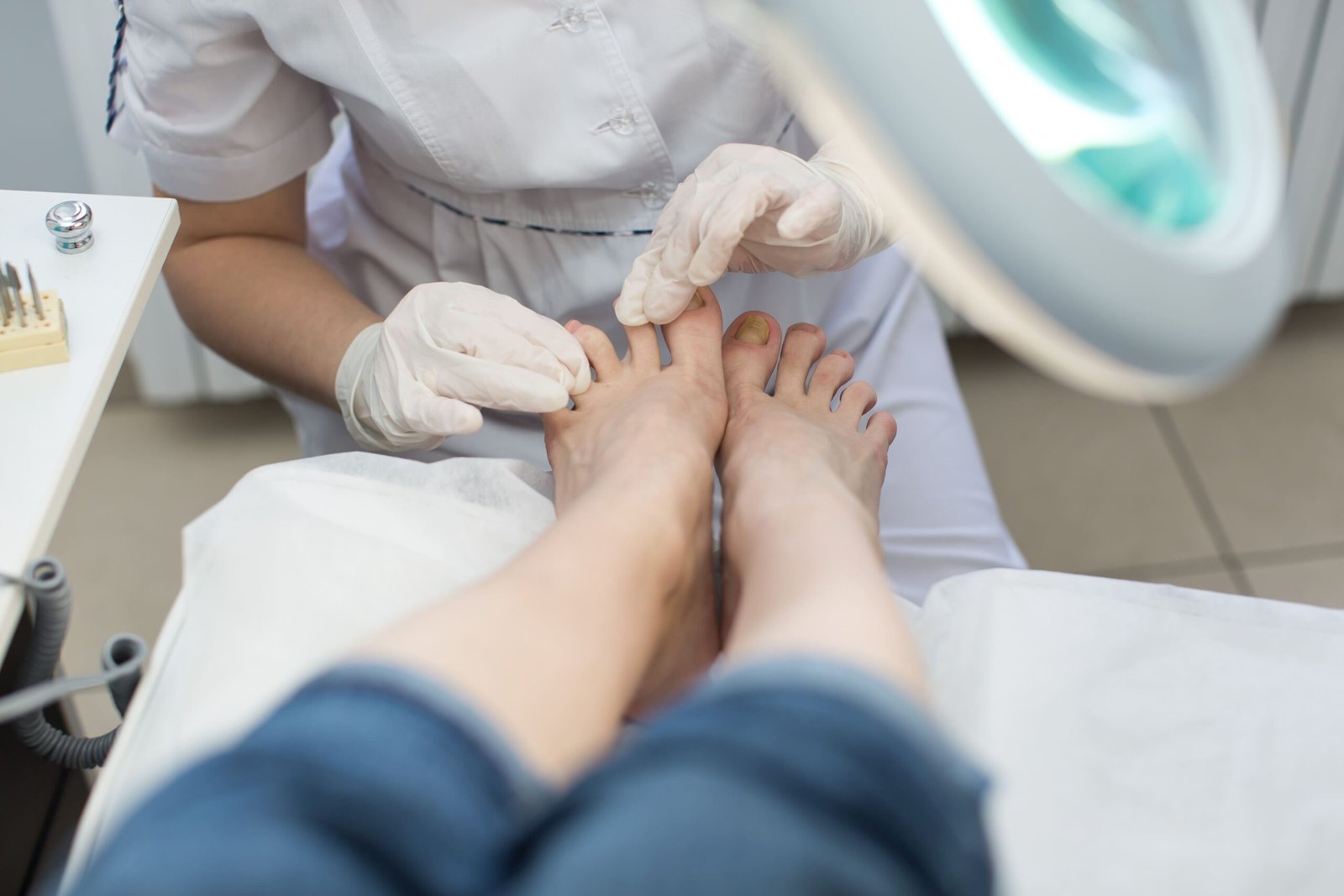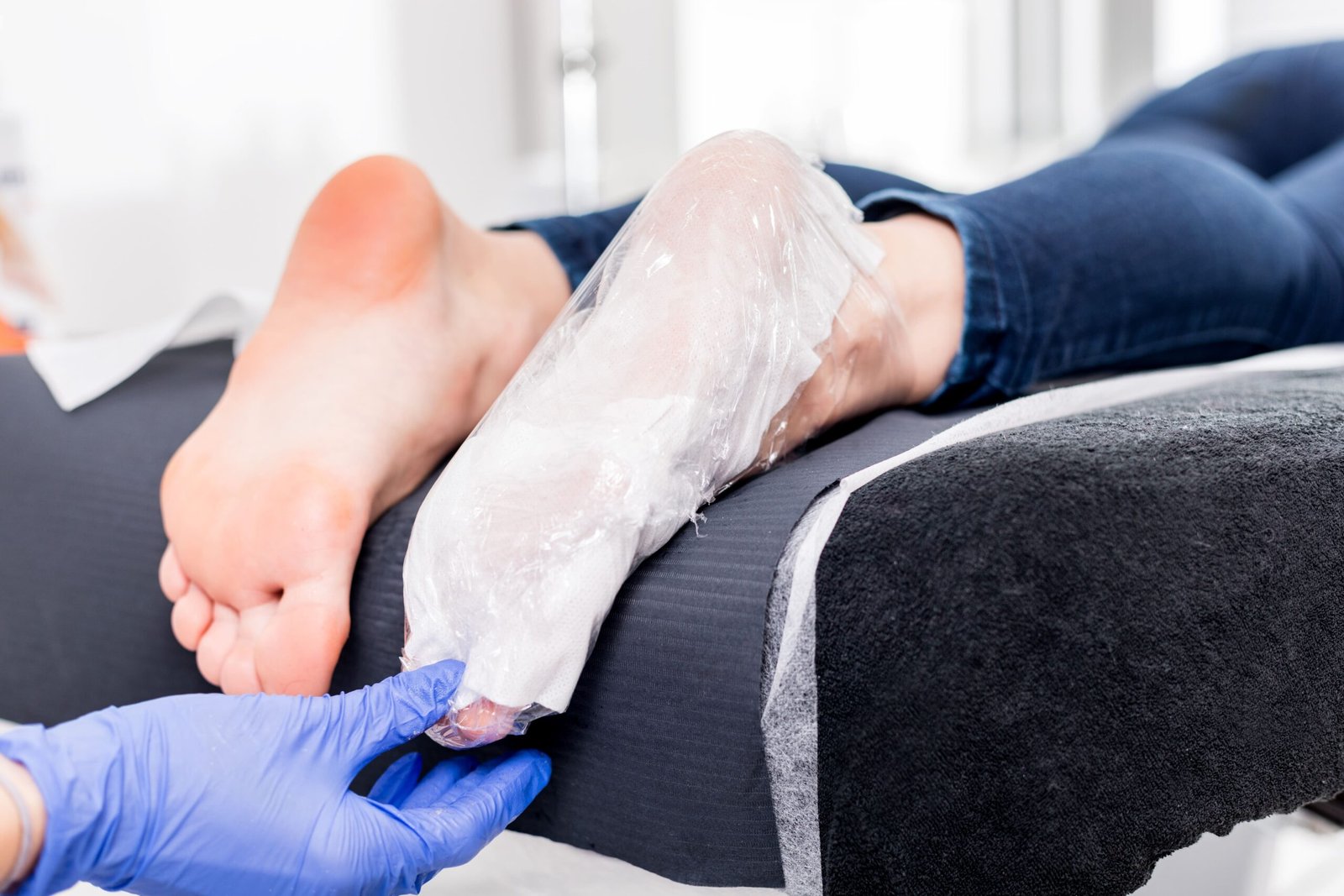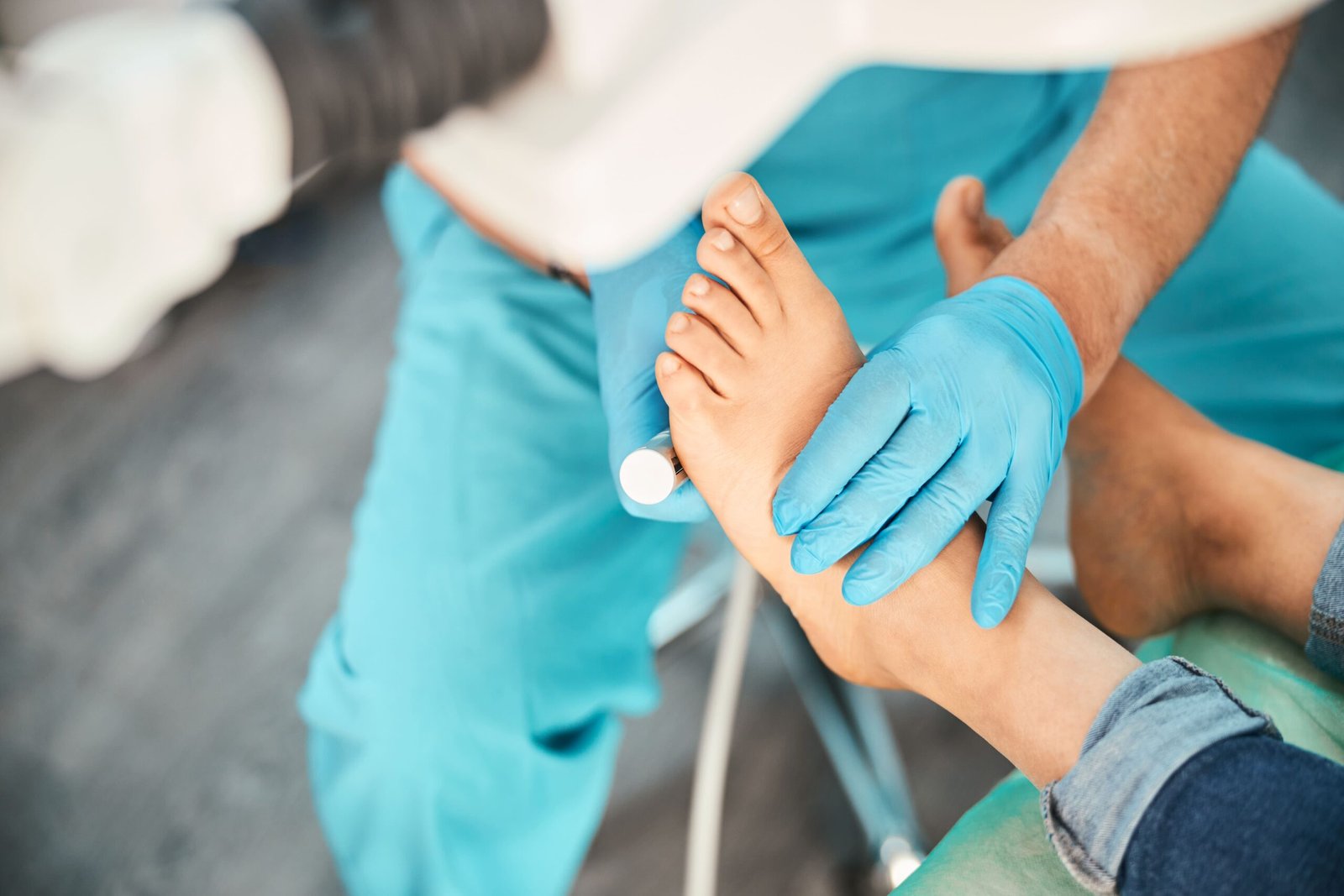Diabetic foot is one of the most common and concerning complications of diabetes. It is characterized by the development of lesions, ulcers, or infections on the feet, caused by reduced sensitivity, poor blood circulation, and delayed wound healing.
What is most alarming is that, if not detected and treated in time, diabetic foot can lead to serious complications that may affect mobility and, in some cases, require surgical interventions. However, with proper prevention and podiatric care, the risk can be drastically reduced, helping patients maintain a good quality of life.
In this article, we will explain what diabetic foot is, the main risk factors, how to prevent it, and the essential podiatric care needed to keep the feet healthy in patients with diabetes.
What Is Diabetic Foot and Why Does It Occur?
Diabetic foot is a condition that affects people with type 1 or type 2 diabetes, mainly caused by two key factors:
-
Diabetic neuropathy: Loss of sensation in the feet that prevents the detection of friction, wounds, or blisters.
-
Peripheral vascular disease: Reduced blood flow that delays healing and increases the risk of infections.
When these conditions occur together, even a small wound can turn into a difficult-to-treat ulcer.
Most Common Risk Factors
Not all people with diabetes develop diabetic foot, but certain factors increase the risk:
-
Poor control of blood glucose levels.
-
High blood pressure and elevated cholesterol.
-
Smoking (which reduces circulation in the extremities).
-
Wearing inappropriate footwear that causes friction.
-
Lack of foot hygiene or proper care.
-
History of ulcers or previous amputations.
Identifying these factors early is key to implementing preventive measures.
The Importance of Prevention
Prevention is the cornerstone of diabetic foot management. According to the World Health Organization, more than 80% of diabetes-related amputations could be avoided with proper care and regular podiatric follow-up.
Some essential preventive measures include:
-
Checking the feet daily for cuts, blisters, redness, or skin changes.
-
Keeping the feet clean and dry at all times.
-
Trimming nails straight across to prevent ingrown toenails.
-
Wearing comfortable, breathable shoes without internal seams that may cause friction.
-
Avoiding walking barefoot, even at home, to reduce the risk of accidental injuries.
The Role of Podiatry in Diabetic Foot Care
The podiatrist plays a fundamental role in the prevention, diagnosis, and treatment of diabetic foot. At InOne, specialists take a comprehensive approach that includes:
-
Regular check-ups to detect early lesions before they worsen.
-
Specialized chiropody, safely removing calluses and hard skin.
-
Treatment of problematic nails (thickened, ingrown, or fragile).
-
Vascular and neurological assessments to evaluate circulation and sensitivity.
-
Patient education on daily self-care of the feet.
Additionally, podiatrists can design custom orthotic insoles to redistribute plantar pressure and prevent the development of ulcers.
Treatment of Ulcers and Lesions
If wounds or ulcers appear, treatment must be quick and effective:
-
Cleaning and disinfecting the affected area.
-
Applying special dressings to promote healing.
-
Offloading the injured area using insoles or orthopedic devices.
-
Complementary therapies such as diode laser treatment, which stimulates tissue regeneration.
-
Coordination with other specialists (endocrinologists, physiotherapists, vascular doctors) for a multidisciplinary approach.
Practical Tips for Patients with Diabetes
Here are some habits that make a real difference:
-
Check your feet daily with the help of a mirror or a family member.
-
Control your glucose levels, blood pressure, and cholesterol.
-
Keep the skin hydrated with specific creams, avoiding application between the toes.
-
Visit a podiatrist regularly for preventive check-ups.
-
Avoid home remedies or cutting calluses on your own.
-
Seek immediate medical advice for any wounds or changes in the skin.
Education and Awareness
Diabetic foot requires not only treatment but also patient education and awareness within their environment. Learning to detect the first warning signs can help prevent serious complications. In this sense, awareness campaigns and self-care workshops are key tools to improve patients’ health outcomes.
Conclusion
Diabetic foot is a serious complication, but with proper prevention and regular podiatric care, the risk of ulcers and infections can be effectively managed and significantly reduced.
At InOne Physiotherapy and Podiatry, our specialists in clinical and preventive podiatry provide regular check-ups, personalized treatments, and patient education in foot care for people with diabetes. Our goal is to help you maintain mobility, independence, and quality of life.
Because healthy feet are the foundation of a healthy body — and for diabetic patients, their care is more important than ever.




